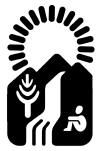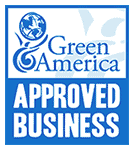Even Low Levels of Common Toxins May be a Danger
USA: October 26, 2005
NEW YORK - There is no clearly safe level of exposure to four of the most common environmental toxins in the world, and more should be done to protect the public, researchers argue in a new report.
The toxins in question -- lead, radon, tobacco smoke and byproducts of drinking-water disinfection -- are ubiquitous, and there is growing evidence that even low-level exposure can have health consequences, according to the report, published in the medical journal PloS Medicine.
"Emerging evidence indicates that exposures must be virtually eliminated to protect human health," conclude Dr. Donald Wigle, of the University of Ottawa in Canada, and Dr. Bruce Lanphear, of Cincinnati Children's Hospital Medical Center in Ohio.
The problem, Wigle told Reuters Health, is that there are no known safe levels of exposure to these toxins, yet people are persistently in contact with them.
"These are widespread exposures," he said. "They're not rare."
Lead, for instance, is present in the air, soil and water, and it has become clear that even relatively low-level exposure can damage the developing brain in young children and fetuses, leading to learning and behavioral problems. In adults, lead exposure may raise blood pressure and damage the kidneys, brain and nerves.
Disinfection byproducts form when drinking water is treated with chlorine to kill disease-causing microbes. The chlorine reacts with organic materials in the water to create a range of chemicals, including a group known as trihalomethanes (THMs). THMs are known to cause cancer in animals, and some studies have linked them to miscarriage and other pregnancy risks. There is also evidence tying them to bladder cancer in humans.
(Note: Trihalomethanes are a chlorine byproduct estimated by the Water Quality Association to be responsible for 2 – 17% of the diagnosed cases of bladder cancer in the US)
Wigle and Lanphear point to a recent analysis of several studies that found that exposure to water with THM levels of 1 mcg/dL may increase the risk of bladder cancer. In the US, the maximum allowable THM level is 80 mcg/dL, and in Canada, it's 100 mcg/dL.
Again, Wigle said, these levels may be "much too high."
The two remaining toxins he and Lanphear highlight -- secondhand smoke and radon -- also have no apparently safe level of exposure. Radon is a natural radioactive gas found in soil, air and ground water that is known to cause lung cancer.
Radon levels in homes and other buildings vary widely, and health officials recommend that people whose homes have radon levels exceeding 4 picoCuries per liter of air take action -- such as increasing ventilation. But again, Wigle and Lanphear note, there are studies suggesting that radon exposure below this level increases the risk of lung cancer. (Note: If you have radon in your water, your exposure will come when the water is used such as in the shower or at the sink)
SOURCE: PloS Medicine, December 2005.
Story by Amy Norton
REUTERS NEWS SERVICE
You can protect yourself. Call me today and your family be drinking healthy water in two weeks.
Return to: Resource Library
My name is Jim McMahon and I help people achieve healthy water in their homes.
***
You may return to my water purification products and services here: Water Products

James P McMahonEcologist
What's in YOUR Water?
 ©
©
Sweetwater, LLC
"When you drink the water, think of the spring"
Return to:
Home Water Purification Systems
* * *
Home Water Purification Systems Air Purification Consultations Buy my Ultimate Guide Resource Library
Water Purifiers Arsenic Iron Removal Commercial Healing Waters Rainwater
Whole House Water Purification Water Testing Healthy Links Biography Well Water Rave Reviews



